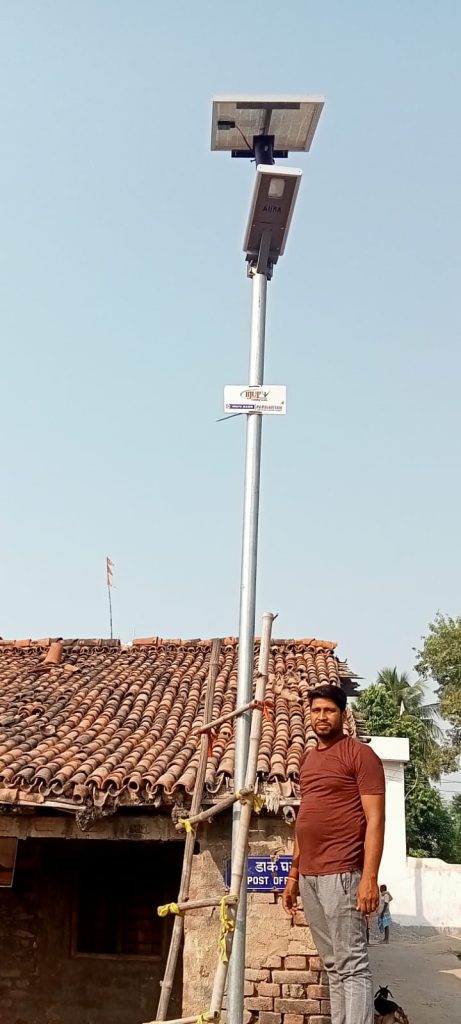The use of energy is an important development indicator of the household’s, as well as the village’s, overall well-being.Despite of the development, villages across Nawada district grapples with energy poverty,households disconnected from the electricity. A majority of these rural households rely on hazardous resouces such biomass fuel, wood ,coal, as well as kerosene to meet their cooking and lighting requirements. However, this approach relies entirely on non-renewable sources of energy,contributing to an increase in the carbon footprint per household.

With a vision to reduce carbon footprint and provide clean, renewable energy solutions,the journey of installing solar street light began with careful site selection with a collaborative effort that involved the minds and hearts of both BJUP and the village development committeesVDC .Through dialogue and deliberation, areas of importance were chosen within each village. It was not just about the placement of lights; it was about minimizing disputes and ensuring that every corner benefited from this transformation.
BJUP initiative has harnessed solar energy in15villages of Warisaliganj and Pakribarawan blocks situated within Nawada district. A total of 150 solar street lights have been successfully installed, benefitting 2500-3000 families to mitigate the electricity problems.
In the heart of this change, a chorus of gratitude and arose. The villagers raised their voices in appreciation stating, “Women felt unsafe to go out to work as it was unsafe to return in the evening and on rainy days. After dusk, fetching water from a nearby water source was also a big challenge. But now, we feel safe as the lights turn on automatically in the evening and remain active till morning.”says Nilam, a woman from village Bhojwan.An adolescent named Seema shared that apart from safety concerns, it has impacted their social relations as well. Community members gather during evenings, school going children sit together in groups to study and play late evening.“Days when the whole village experiences darkness due to power cut, our streets light up with solar street light, she says. “The solar street has helped me work for longer hours and my 3 children, two boys and a girl, can now study without the fear of losing power,” says a grateful Laxmi resident of Bali .
For the family, and hundreds of others like them, the long, dark night has finally turned into day.In the glow of these solar street lights, the villages of Warisaliganj and Pakribarawan stood as a testament to what could be achieved through partnership, vision, and a commitment to sustainable development.